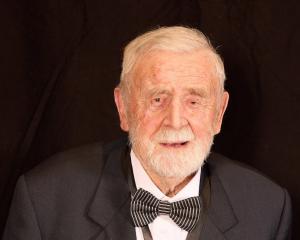Otago research projects on glowworms, natural hazards, heart attacks and reconstructive surgery have each received about $1 million in funding from the Ministry of Business, Innovation and Employment.

Each project was selected for its potential to deliver significant scientific, environmental and economic benefits for New Zealand.
University of Otago biochemist Prof Kurt Krause is leading a project which aims to harness the unique glow of the New Zealand glowworm (titiwai) as a biotechnology tool.
"We will work to understand and enhance these bioluminescent properties in the laboratory and explore the use of this bioluminescent system as a biotechnology tool in biomedical and biological investigations.
"Biotechnology tools based on luminescence can be used to track disease causing microorganisms or locate abnormal cells, like cancer cells, in organs and tissues."

"The team will improve the physical multi-hazard analysis using site-specific climate and groundwater data sets; factor behavioural responses of market participants (homeowners, banking and insurance firms) and explore how this may affect the pricing of flooding risk; develop better ways to estimate risks to mortgage lending including repayment and defaults; capture the wider effects of flooding risk on the broader economy and financial stability; and go beyond financial impacts and consider social, physical, and cultural factors with a spatial multi-criteria risk index.
"Successfully achieving these goals will result in more accurate, applicable, and relevant climate risk estimates that better serve the needs of climate risk pricing and adaptation policies."

Advanced biochemistry and experimental cardiology techniques had been used to discover two novel proteins carried in the blood that could accurately assess a person’s risk of serious heart disease and future heart attack.
A prototype point-of-care device capable of measuring these proteins from a very small blood sample has since been built, potentially enabling on-site testing in small towns and remote areas.
The next step was to bring the device to commercial markets, he said.
University of Otago (Christchurch) orthopaedic surgery and musculoskeletal medicine researcher Prof Tim Woodfield aims to revolutionise the medical aesthetic and tissue grafting

"The process involves injecting tissue-like materials into the targeted site with the aim of contouring tissue under the skin or repairing damage.
"Our light-based technology is expected to drastically reduce the number of repeated reconstruction surgeries that are currently performed (e.g. breast cancer surgeries) and support tissue regeneration."














